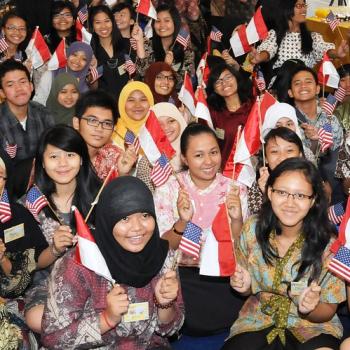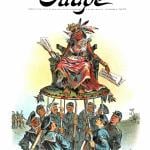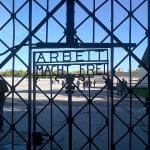Pro-Moscow protesters in eastern Ukraine seized arms in one city and declared a separatist republic in another, in moves Kiev described on Monday as part of a Russian-orchestrated plan to justify an invasion to dismember the country.
Kiev said the overnight seizure of public buildings in three cities in eastern Ukraine’s mainly Russian-speaking industrial heartland were a replay of events in Crimea, the Black Sea peninsula Moscow seized and annexed last month.
“An anti-Ukrainian plan is being put into operation … under which foreign troops will cross the border and seize the territory of the country,” Prime Minister Arseny Yatseniuk said in public remarks to his cabinet. “We will not allow this.”
Pro-Russian protesters seized official buildings in the eastern cities of Kharkiv, Luhansk and Donetsk on Sunday night, demanding that referendums be held on whether to join Russia like the one that preceded Moscow’s takeover of Crimea.
Acting President Oleksander Turchinov, in a televised address to the nation, said Moscow was attempting to repeat “the Crimea scenario”. He added that “anti-terrorist measures” would be deployed against those who had taken up arms
From A Russian Invasion of East Ukraine Would Make Crimea Seem Like a Cinch. Time:
Eastern Ukraine is not like Crimea. It is far bigger, more diverse, better integrated into Ukraine’s economy and more vital to its survival than Crimea, and if the action proceeds again toward a Russian invasion of these territories, the Kremlin’s choreographers will have a much harder time pulling it off. The stakes this time are incomparably higher.
For one thing, Ukraine will defend itself. . . .On Monday, Ukraine’s acting President, Oleksandr Turchinov, made clear that Ukraine would not sit by as it did with Crimea and watch another Russian land grab. “This is the second wave of the Russian Federation’s special operation against Ukraine,” he said in a televised address to the nation. “Its goal is to destabilize the state and overthrow Ukrainian power, disrupt the elections and tear our country into pieces.” By then, his security chiefs had already raced to eastern Ukraine to prepare a defense of its cities. Police had begun arresting separatists across the region and fighting to take back occupied buildings in what they termed a “counterterrorism operation.” Ukraine’s parliament then passed tougher laws on Tuesday against separatism, but stopped short of a proposed state of emergency in three eastern regions – Donetsk, Luhansk and Kharkiv – where Ukrainian fighter jets had begun to patrol the skies.. . .
The demographics of eastern Ukraine also would not lend themselves to a secessionist referendum. According to the most recent census held in 2001, ethnic Ukrainians make up nearly 60% of the population in Donetsk and Luhansk, and more than 70% in Kharkiv, compared to only 24% in Crimea, where the majority are ethnic Russians. So it is hardly likely that a referendum in these eastern regions would result in a decision to break from Ukraine and join Russia, at least not by the overwhelming majority that was seen in Crimea last month.
More importantly, such a referendum could only be held if Russia first manages to occupy these regions, kick out the Ukrainian security forces and install a separatist government that could push ahead with a Crimean-style plebiscite under the gun. That would mean a Russian land invasion and, most likely, the start of a full-scale war that would cost many lives on both sides, pitting the armies of two fraternal nations against each other, nations that share ties of culture, religion, language and oftentimes blood.
Though Russia would surely win such a conflict, the conquered territory of east Ukraine would be much harder to defend.












